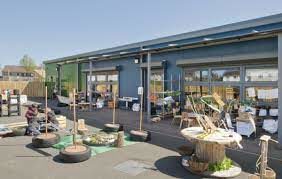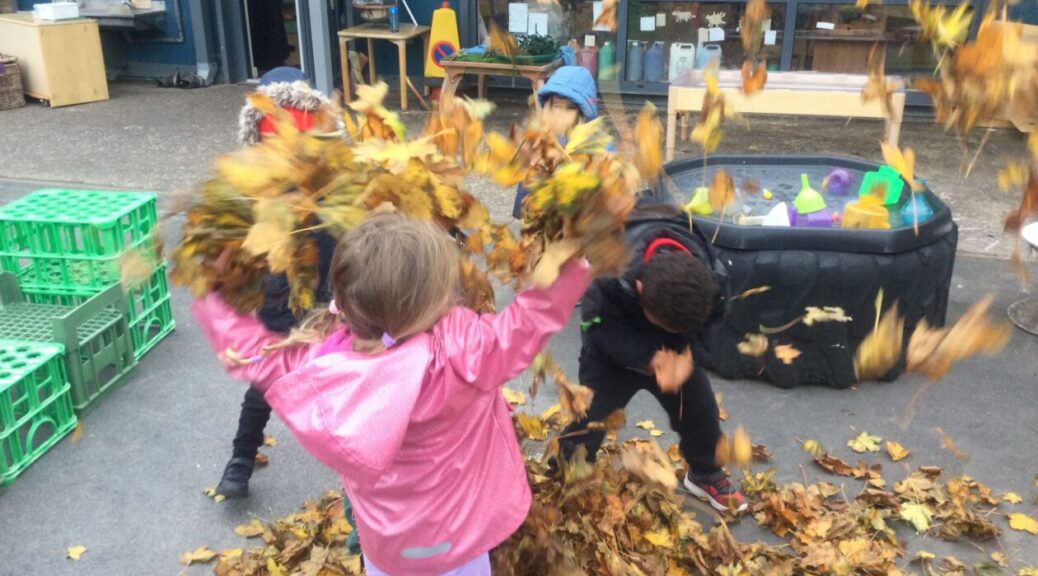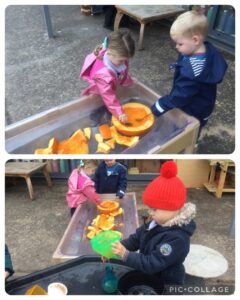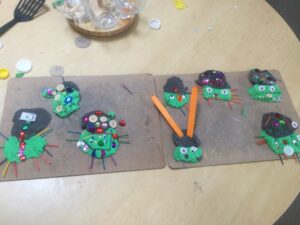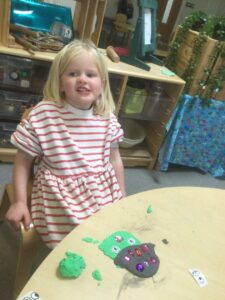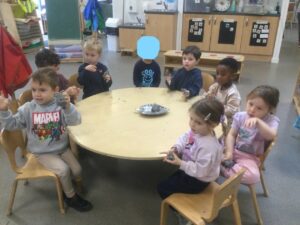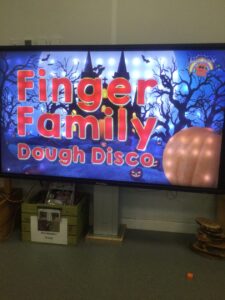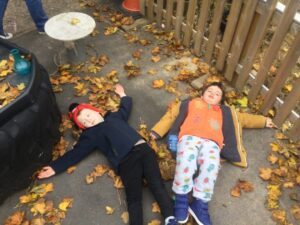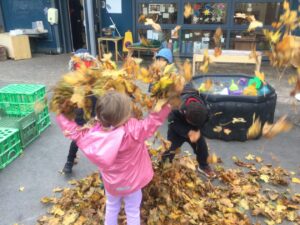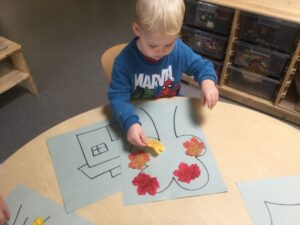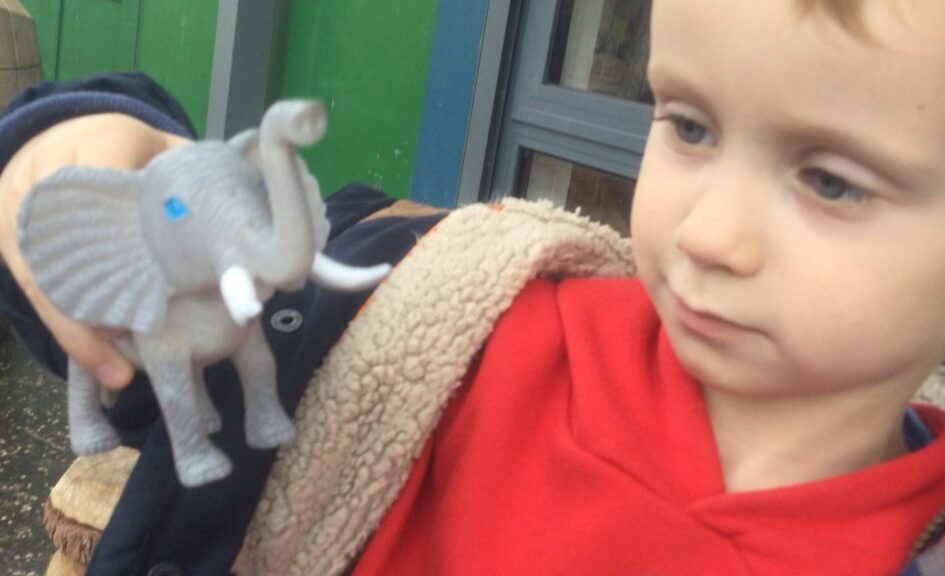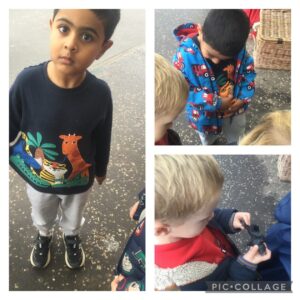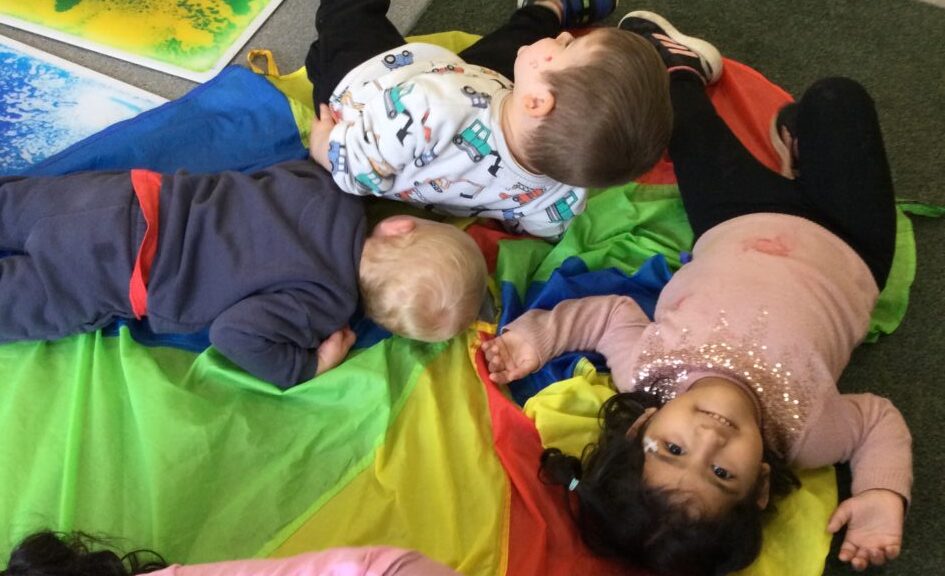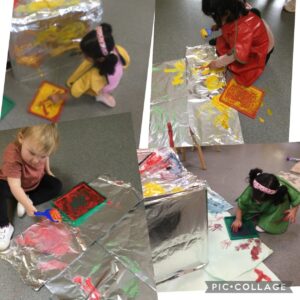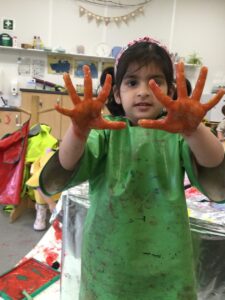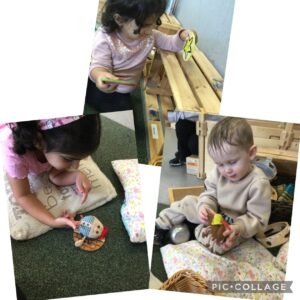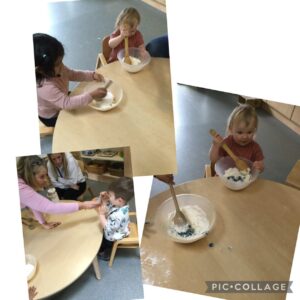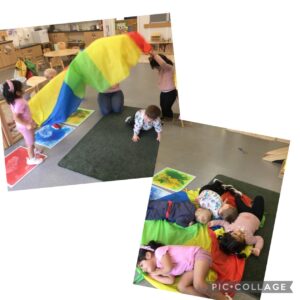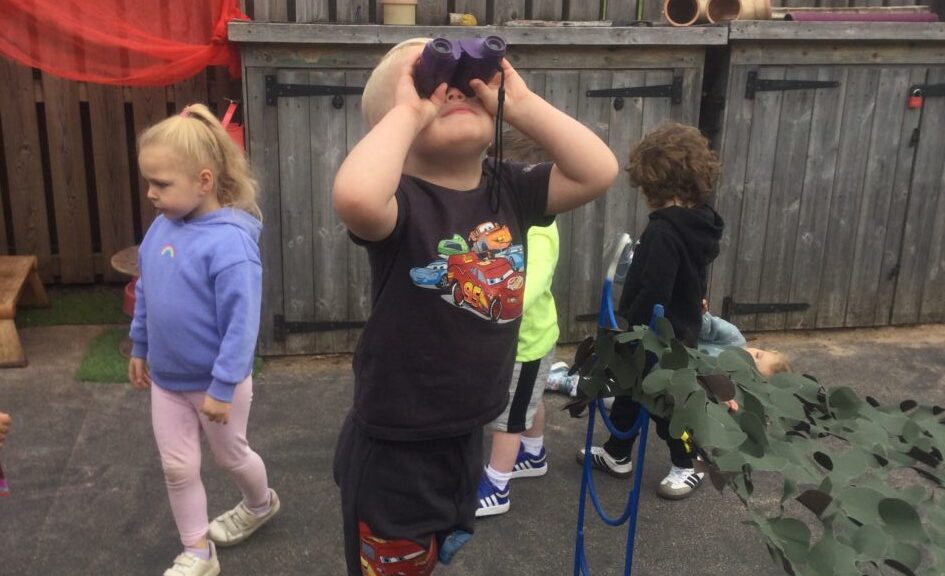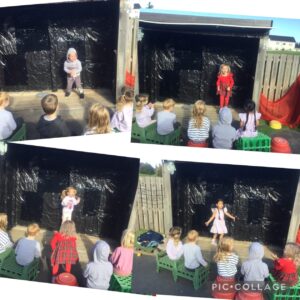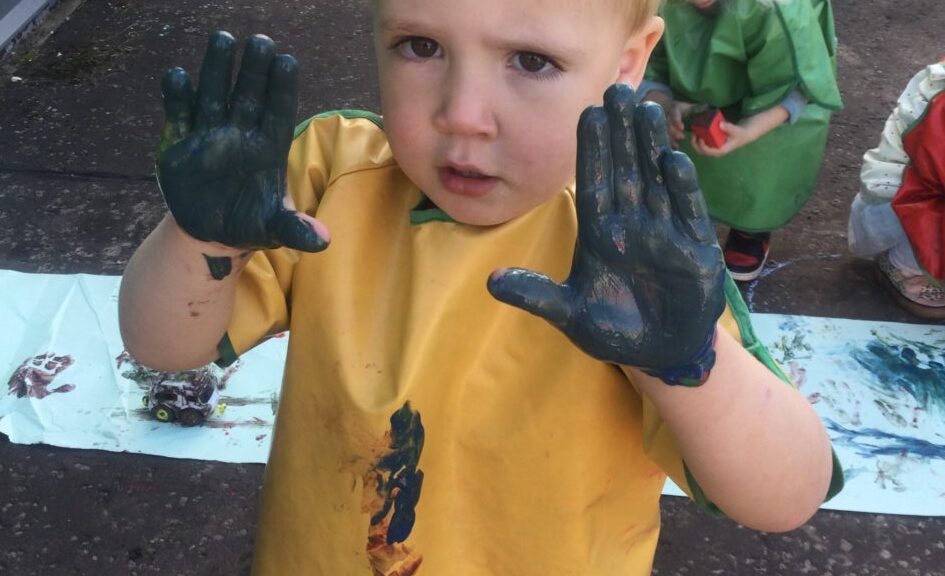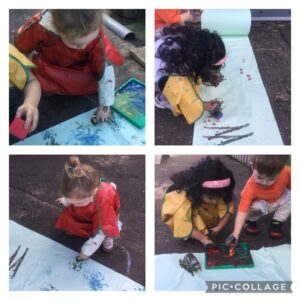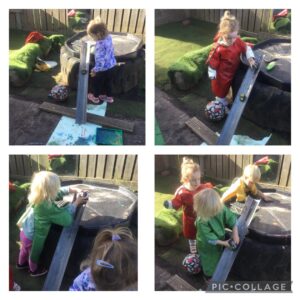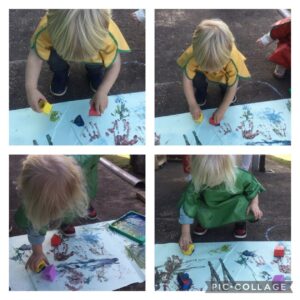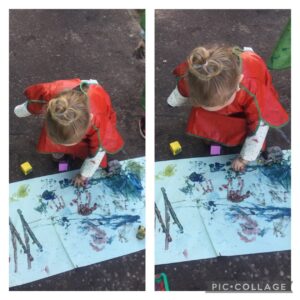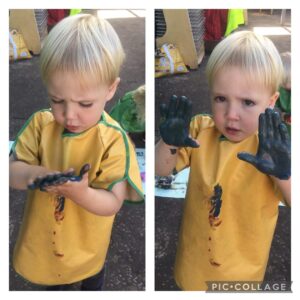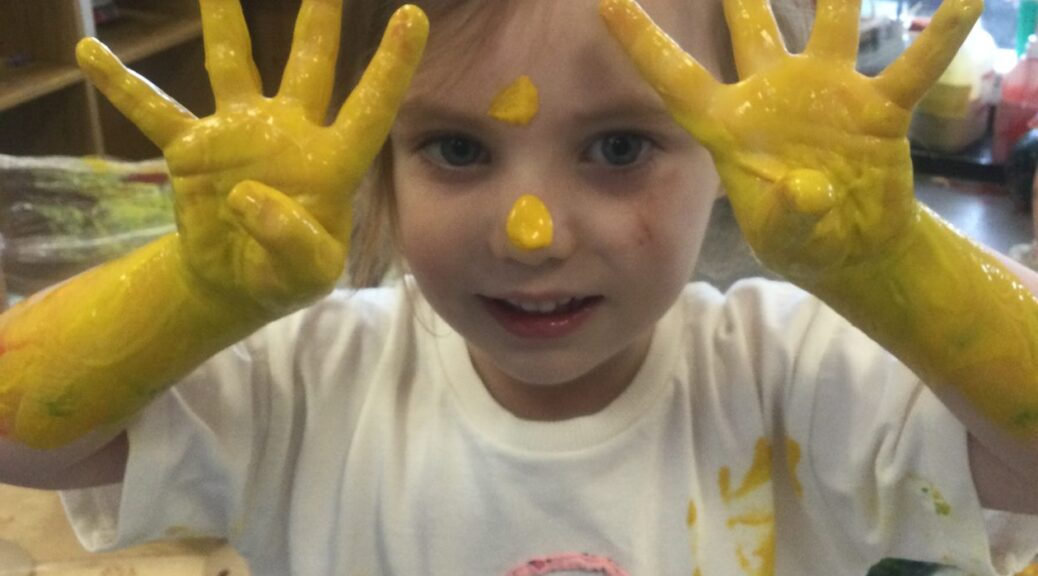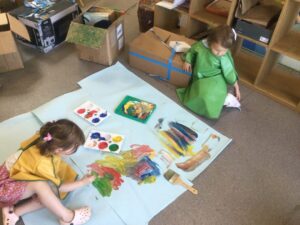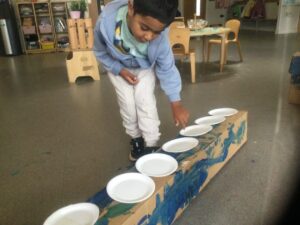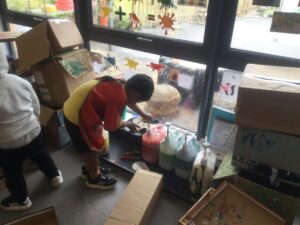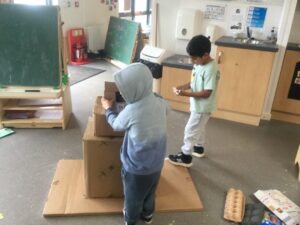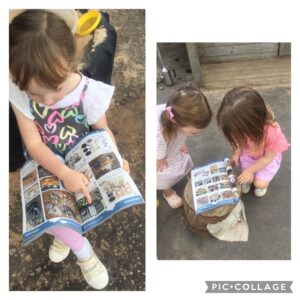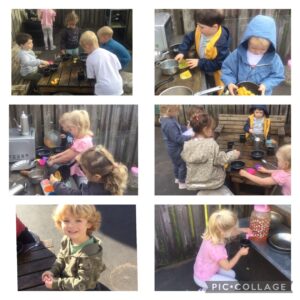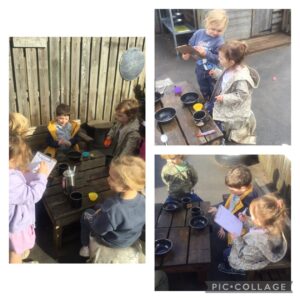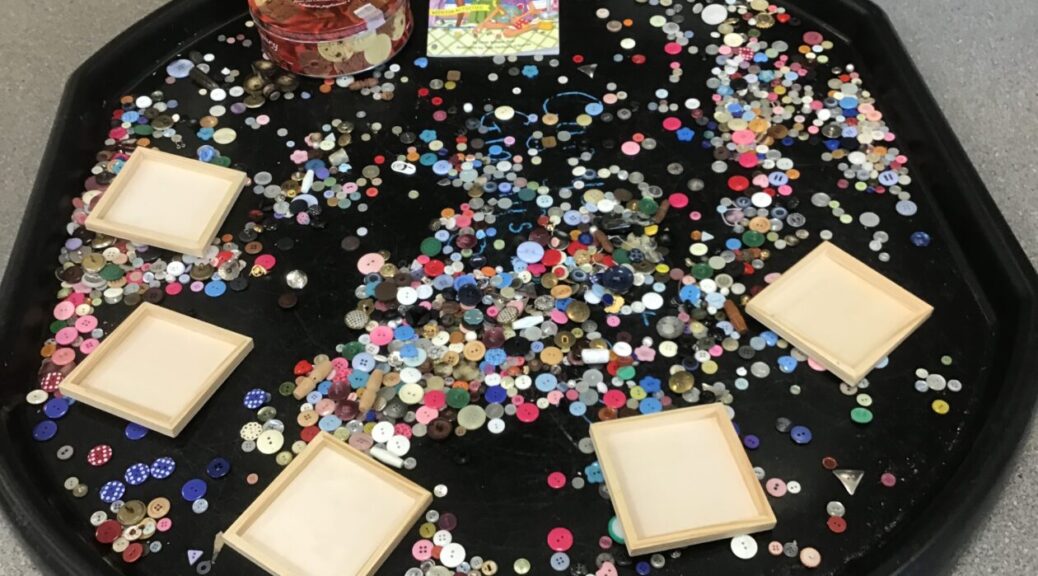The children wanted to share what they love most about Cart Mill.
Line Patterns
This week in our mark making area we have been exploring pre-writing line patterns. Pre-writing line patterns are simple lines, shapes and strokes that children learn to draw before they start writing actual letters or numbers. These patterns help develop the fine motor skills, hand-eye coordination, and muscle control needed for letter formation.
This week was Diwali and we celebrated in our mark making area by creating our own mehndi hand patterns.


We loved rolling the dice and copying the line patterns to make some crazy hair!


We used our chalk pens to draw some line patterns on foil and on our chalkboard.
We were then able to incorporate the line patterns into our drawings.


Article 28 I have the right to an education.
Outdoor Classroom Day
Today we took part in Outdoor Classroom Day. Learning in an outdoor environment helps to ensure positive intellectual, emotional, and social development whilst building the foundations for a lifelong connection with nature and our planet.
We have developed our throwing, counting and turn taking skills while playing the bean bag toss…
We have developed our literacy, drama and cooperation skills while re-telling the story of The Three Billy Goats Gruff…
We have learned about the seasons and that we need to help feed the animals during the cold months while making bird feeders…
And we have learned how to keep the bugs safe in our garden by making a bug hotel..
We even found our first guest for the hotel- a baby slug…
Article 31- we have the right to relax, play and take part in a wide range of activities.
October week autumn fun!
Throughout the week, the children have been exploring the wonders of Autumn and taking part in lots of various learning experiences.
We have been exploring textures and smells with the pumpkins and creating witches potions with water and various different funnels!
The children have also been developing their creativity and imagination skills by making their own spooky witches, spiders and zombies with the playdough and a variety of loose parts.
The children have also been taking part in a special Halloween themed ”dough disco” which helps children to practice different finger movements to develop their muscles in their hands and their brains for early stages of writing.
We also had so much fun in the garden exploring the Autumn leaves, we were throwing them high into the sky and stamping our feet in them to hear the different sounds that they made!
The children have also been creating Autumn transient art pictures using the leaves developing their creative and artistic skills.
Article 28- You have the right to an education
Wild animals in action!
All things wild and wonderful has been a continuing theme in our garden this week! We love small world play and are always keen to introduce our favourite animals, figures and vehicles! Small world play is a fantastic way to develop our imagination, creativity and problem solving skills. We loved one of our friend t-shirts and this sparked the idea to explore wild animals! Delving into our resources we discovered elephants, tigers, gorillas, rhinos, tigers and lions “the king of the jungle!”
One of our favourite books is Rumble in the Jungle and we had so much fun retelling the story using our animals, adding a “roar for the lion”, “oooh-oooh, aah-aah like the monkey”, and our favourite actions for the elephant, chimpanzee and sssssssssnake!
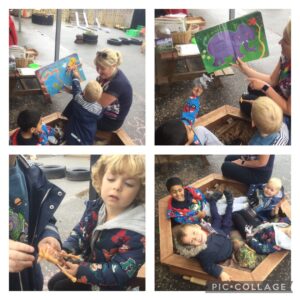
We shared our experiences of visiting “Edinburgh zoo” “the safari park” and chatted about the animals we had seen and which were our favourites. Taking turns, we discussed our favourite animals and shared our fantastic knowledge about the features of each animal!
“the elephant has a trunk, it drinks the water and then spits it out all over its head, like a shower”. “The lion was sleeping and it did a big roar”, the giraffe has a big long neck. It doesn’t have any hands so it uses its big long tongue to eat leaves on the tree. It’s tongue is blue, like my top!”
Next we decided to move like our favourite animals! We agreed that the giraffe is “very tall so we have to reach up to the sky, on our tippy toes”, “the hippo rolls in the mud, like this”, “the crocodile snaps like this”, and the cheetah runs really fast”.
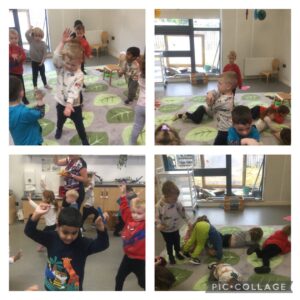
We demonstrated that we can hold balance in various shapes when moving, are aware of and can control our personal space and body parts when moving, perform basic movements such as jumping, hopping and running and move different parts of our bodies at different speeds.
The weather may have been wild but we have had a wonderful time and had so much fun, ROAR!
Article 29: I have the right to an education which develops my personality, traits and abilities.
Fun in the pond
Come and see some of the things we got up to today.
The children have been expressing themselves with the paint, using their large motor skills to create their ideas on the shiny tinfoil and seeing how the colours mix together to create new ones .
We have been using our nursery rhymes to recognise colours, make choices and take turns. The children each chose a coloured disc which has a nursery rhyme on the back (eg. Red disc = The wheels on the bus) to sing together.
“My favourite is Twinkle Twinkle”
The children mixed together all the ingredients to make play dough, learning to follow simple instructions and develop their gross motor skills as they stir. They added blue paint to add colour and explored the textures and feelings using their senses.
“It feels sticky”
Finally we played parachute games, using our large muscles to move the parachute up and down working together as team to make it move. We sang some songs and sat under the parachute before doing sleeping bunnies.
Our Exciting Garden 🪴
Our garden has been very busy and we have especially enjoyed the better weather over the last few days. Playing outdoors allows children develop self-confidence, independence and self-esteem. Their physical health improves through exercise and vitamin D, enhanced mental well-being, better sleep quality and increased social interaction and development.
Of course we are just having lots of fun !!
We have enjoyed developing our obstacle course adding on extra challenges ….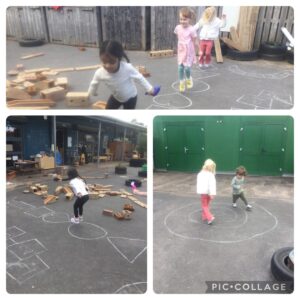
”round and round gets me dizzy”
How many steps to get to the bridge ?
The boys and girls had great fun on be a Pirate day ….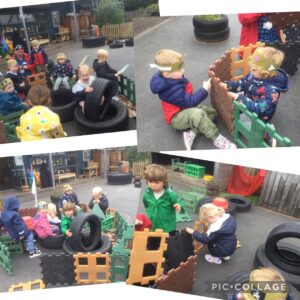
We used our creativity and problem solving skills to build a pirate ship …..
Ooh arrrgh if the pirates caught you they would make you walk the plank into shark infested waters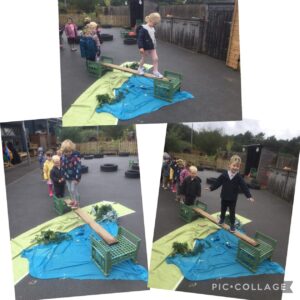
In the water tray the water had turned red “my hands are red when they are under the water. We did lots of poring and filling to get rid of our Red Sea 🌊 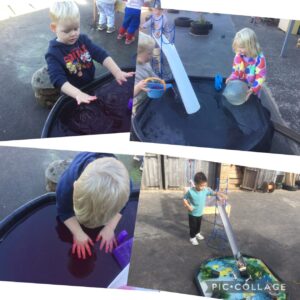
Finally we have been enjoying some theatre shows on the Cartmill stage showing off our creativity, imagination and acting skills along with some great singing .
After such a busy few days we are all ready for our holiday weekend which we hope you all enjoy.
Article – Children have the right to play and explore their outdoor environment.
Fun with paint!
Today in the Pond the two year olds were making the most of the sunshine in the garden. With this being Maths Week Scotland we decided to explore shapes and patterns whilst still getting messy and having lots of fun.
We got some paint trays and rolled our toy cars in the paint! We then rolled them on a large piece of paper to see what patterns we could make with the tracks!
We then decided to roll or cars down a ramp and onto the paper to see if the patterns were different!
“It’s very fast!”
This activity helps to develop the children’s fine and gross motor skills whilst exploring colour and pattern.
The children then decided they wanted to dip the wooden shapes in the paint and stamp them on to the paper!
“A yellow square and a red triangle!”
”It’s a rainbow!”
The children showed great imagination, creating lovely pictures!
In the Pond it’s the messier the better so there was some colour mixing going on too!
“I’m rubbing them together to make purple!! Look!”
What a great morning we had exploring patterns, shapes and colours in a fun, engaging and creative way!
Article 31 ~ Children have the right to play and participate in artistic activities.
What’s been happening in our junk modelling area…📦📦📦
Thank you so much for your continuous supply of recycling, the children are so creative and make masterpieces of your boxes, plastic bottle tops, cardboard packets and much more.
We wanted to show you what we have been doing in our junk modelling area….the learning, the sharing, the co operation, the collaborativeness and problem solving skills also numeracy skills measuring, how many, how tall, literacy describing our plans, drawing out and detailing our plans. Gross motor moving the boxes and fine motor snipping, cutting, sticking, drawing….who knew all these valuable skills that can come from a recycled cardboard box!!!
Colour mixing
Train building
Working together
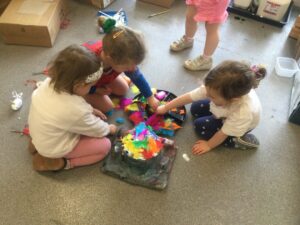
Scaffolding our learning from each other.
Please continue to donate your cardboard for the children to recycle 🥰🥰🥰
Article 28 Right to education
Article 31 The right to play and relax
Busy Bakers
Welcome to our mud kitchen! We have had so much fun being busy bakers and creative chefs. We have introduced some new resources to enrich our play and the children have loved exploring everything!
We have added lots of things you would find in a kitchen including; mugs, bowls, plates, pots and baking tins as well as lots of kitchen utensils. The children had helped to choose the resources from the catalogue so they were very excited when they arrived.
Before we could open our cafe, we had to decide on a name. Everyone came up with ideas before we voted for Rainbow Cafe!
For our first masterchef experience in our cafe we used our senses to make various cakes, soup, spaghetti bolognaise and lots of other delicious recipes. We looked at our fruity ingredients and we felt them between our fingers, then we explored the different smells, such as lemon, lime and orange. The children talked about their favourite scent and said that lime was the most popular.
The children showed great imagination and, using their mark making skills, took orders to give through to the chefs who were busy creating the orders, squeezing the juices from the fruits and stirring the ingredients together.
Everybody is most welcome at the Rainbow Cafe, you can find us in Cart Mill garden, open 5 days a week! Bon appetit!
Sorting Fun
This week we have been continuing to develop our sorting skills. We have been sorting all different objects in all different ways.
We sorted the sea animals by type.

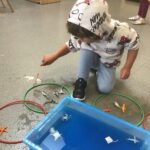
We sorted the buttons by shape and also by colour.
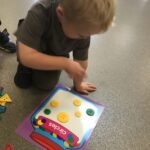
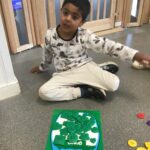
We realised the snakes were all different sizes. We sorted them into small, medium and large.
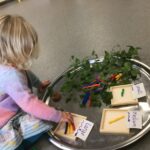
“Mama”
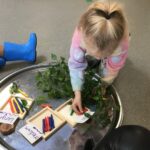
Now that some of our children are confident in sorting by a given criteria, we are challenging them further by encouraging them to sort by their own attributes.
We read the story of Granny’s Button Box and then Gail showed us something really exciting! Her box of buttons! There were so many and all so different! We had so much fun exploring them and then we began to sort in our own chosen ways.
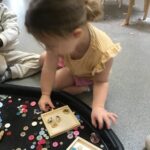
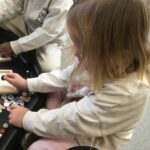
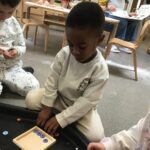
I wonder what we will sort next week?

